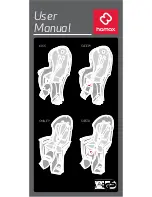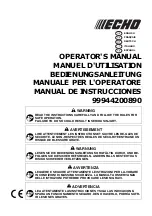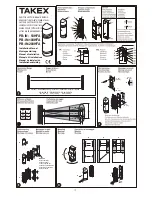
12.
Travel with the housing protected in a padded case. It is best to remove the camera from
inside the housing when traveling and
compartment.
13.
Always leave the housing slightly open when transporting by air.
14.
Never dive with the Fantasea
FG7X III R
15.
It is important to carry out the
the watertight seal has not been affected during transport and long periods of storage.
16.
It is likewise recommended to visually monitor the housing during every descent, especially
for the first 10 meters/33 feet. If water is obse
from it, the housing should be rotated to a
return to the surface immediately and get
17.
When mounting wet lenses on the housing lens port, it is re
guidelines below in order to avoid wearing out the threads of the housing lens port and
lenses over time:
a.
Prior to installing the lens on the housing, it is recommended to apply a small
amount of silicone grease on the threaded area
used) to reduce the amount of friction.
b.
Install the lens on the housing lens port underwater only and remove it prior
to ending the dive. Once removed, the lens can be mounted on a lens holder.
Avoid having the lens assembled
as it is heavier and exerts more pressure on the threads.
c.
It is recommended to reduce wearing of the threads by using lens mounting
accessories such as bayonet mounts or flip adaptors.
d.
These guidelines apply
important when making use of relatively heavy wet lenses.
FG7X III R Housing Instruction Manual
33
Travel with the housing protected in a padded case. It is best to remove the camera from
inside the housing when traveling and to provide it with its own protective case
Always leave the housing slightly open when transporting by air.
FG7X III R Housing
to a depth greater than 60 meters/200 feet
It is important to carry out the first dive without the camera inside the housing.
tight seal has not been affected during transport and long periods of storage.
It is likewise recommended to visually monitor the housing during every descent, especially
t. If water is observed entering the housing or bubbles escaping
from it, the housing should be rotated to a
port down position
and held that way as you
return to the surface immediately and get it out of the water.
When mounting wet lenses on the housing lens port, it is recommended to follow the
guidelines below in order to avoid wearing out the threads of the housing lens port and
Prior to installing the lens on the housing, it is recommended to apply a small
amount of silicone grease on the threaded area of the lens (and adaptor, if
used) to reduce the amount of friction.
Install the lens on the housing lens port underwater only and remove it prior
to ending the dive. Once removed, the lens can be mounted on a lens holder.
Avoid having the lens assembled on the housing on land as much as possible,
exerts more pressure on the threads.
It is recommended to reduce wearing of the threads by using lens mounting
accessories such as bayonet mounts or flip adaptors.
to all wet lenses brands and models, but especially
important when making use of relatively heavy wet lenses.
Instruction Manual 20200220
Travel with the housing protected in a padded case. It is best to remove the camera from
protective case or
60 meters/200 feet.
de the housing. Check that
tight seal has not been affected during transport and long periods of storage.
It is likewise recommended to visually monitor the housing during every descent, especially
rved entering the housing or bubbles escaping
and held that way as you
commended to follow the
guidelines below in order to avoid wearing out the threads of the housing lens port and
Prior to installing the lens on the housing, it is recommended to apply a small
of the lens (and adaptor, if
Install the lens on the housing lens port underwater only and remove it prior
to ending the dive. Once removed, the lens can be mounted on a lens holder.
on the housing on land as much as possible,
It is recommended to reduce wearing of the threads by using lens mounting
to all wet lenses brands and models, but especially


































